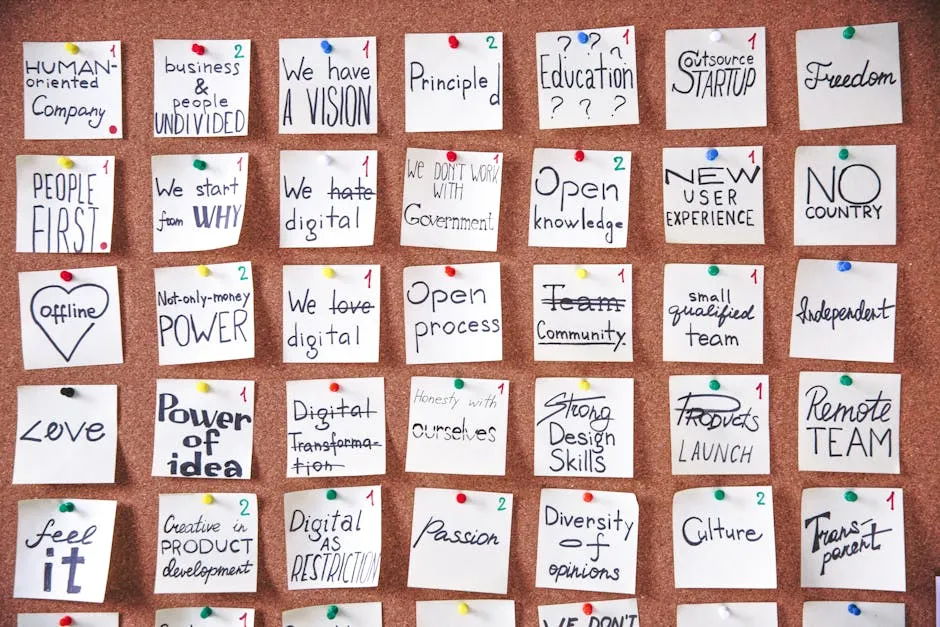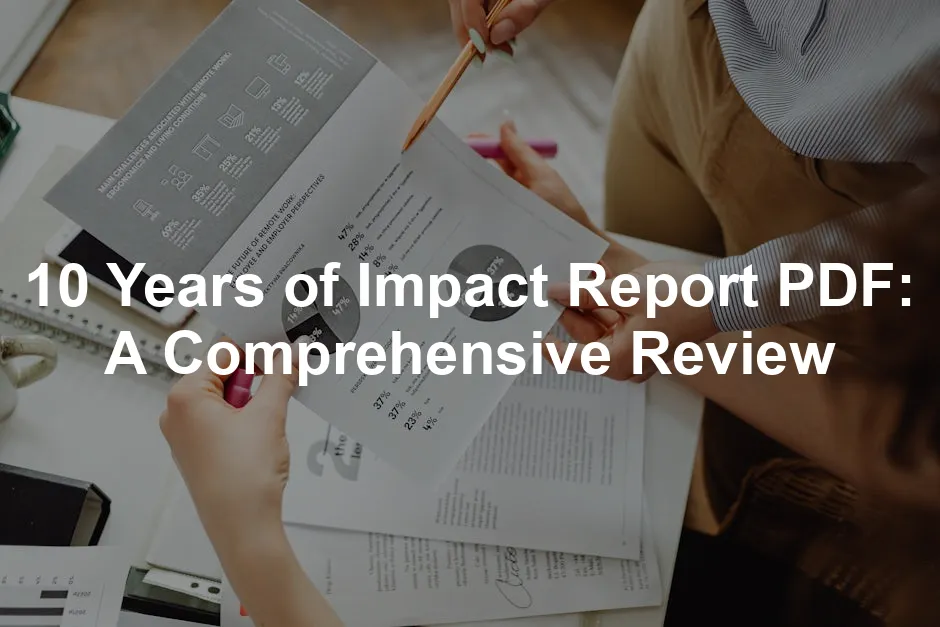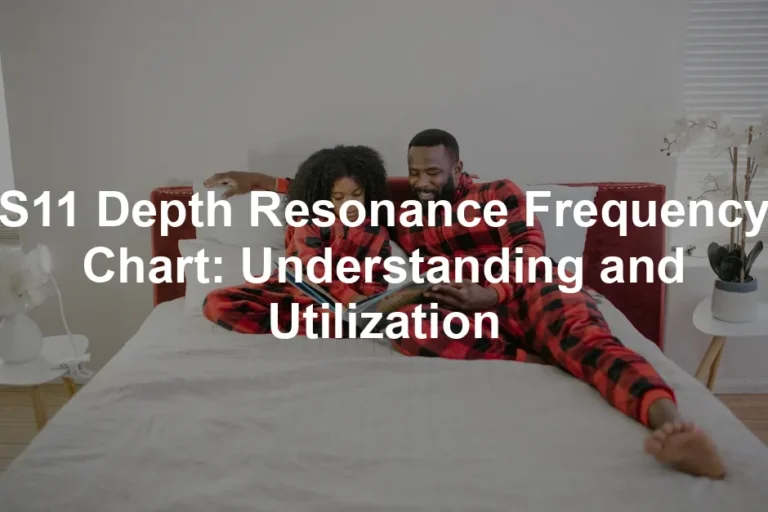Introduction
Impact reports showcase an organization’s achievements and challenges. They highlight progress and areas needing improvement. Reviewing a decade’s worth of data helps us understand growth and accountability. This article explores key findings from various ten-year impact reports, shedding light on their significance.
Summary and Overview
An impact report is a document that outlines an organization’s social contributions and outcomes. Typically, it includes sections on goals, achievements, challenges, and future directions. These reports are vital for accountability and transparency, helping stakeholders assess the effectiveness of initiatives.
Many organizations release impact reports every five years or a decade. This trend reflects a commitment to ongoing evaluation and improvement. Notable organizations featured in this article include IDEO.org and Oxfam, both of which have shared valuable insights from their ten-year evaluations.
Statistics reveal that numerous organizations release impact reports annually. On average, many report significant improvements in their social impact over the years. These reports serve as essential tools for social impact assessment and organizational growth, reinforcing the need for accountability in NGOs.
Curious about specific impact reports? Download them and see how organizations track their progress. Share your thoughts on the importance of accountability in the comments below!

1. Understanding Impact Reports
What is an Impact Report?
An impact report is a comprehensive document detailing an organization’s results over a specified period. Its primary purpose is to assess social contributions and outcomes, showcasing how efforts align with stated goals. Organizations use impact reports to communicate their achievements and challenges transparently.
There are several types of impact reports. Annual reports provide yearly updates on progress. Five-year reports offer a medium-term view of achievements and areas needing improvement. A ten-year impact report, however, provides a deeper insight into long-term trends and strategic shifts.
Importance of Impact Reports
Impact reports play a crucial role in promoting accountability and transparency. They help organizations demonstrate their effectiveness to stakeholders, including donors, partners, and the community. By providing a clear view of successes and challenges, these reports build trust.
Stakeholders benefit from impact reports as they gain insights into an organization’s operations. They can evaluate whether their investments yield meaningful results. Additionally, these reports encourage organizations to reflect on their practices, fostering continuous improvement.
To enhance your understanding of impact reporting, consider diving into Measuring Social Impact: A Guide for Nonprofits. This book offers a practical approach to understanding how to measure and report on social contributions effectively, ensuring that your organization communicates its value clearly.

2. Key Components of a 10-Year Impact Report
Data and Statistics
Quantitative data is vital in a ten-year impact report. It provides concrete evidence of progress and helps organizations track their growth over time. Key metrics often included are the number of beneficiaries served, funds raised, and projects launched. These statistics create a compelling narrative about the organization’s journey.
For instance, IDEO.org reported on their work across 45+ countries, showcasing their reach and impact. Such data not only highlights achievements but also invites stakeholders to understand the scale of efforts.
Understanding how to effectively collect and utilize iep data collection sheets can greatly enhance the quality of data in impact reports.
For those looking to master data visualization techniques, check out Data Visualization for Human Services. This book will equip you with essential tools to present your data effectively, ensuring your impact reports are not only informative but also visually appealing.

Qualitative Insights
Qualitative insights enrich impact reports by adding a human element. Testimonials and case studies illustrate the real-life effects of an organization’s work. They provide context to the numbers, allowing stakeholders to connect on a personal level.
A well-crafted narrative is essential in presenting impact. Oxfam’s reports highlight stories from beneficiaries, emphasizing the programs’ effectiveness. This approach fosters empathy and understanding, making the report more engaging.
Strategic Recommendations
Actionable insights are a critical component of any impactful report. Recommendations guide organizations in refining their strategies and enhancing effectiveness. A ten-year impact report should include specific actions based on the data and insights gathered.
For example, Oxfam’s recent report emphasized the need for increased focus on community mobilization and addressing root causes of poverty. By sharing such recommendations, organizations can inspire change and foster collaboration among stakeholders.
To further explore actionable strategies, consider reading The Nonprofit Handbook: Everything You Need to Know to Start and Run Your Nonprofit Organization. This resource is packed with insights that can help you craft effective strategies for impact.

3. Case Study: IDEO.org’s 10-Year Impact
Overview of IDEO.org
IDEO.org is a nonprofit design organization. Founded in 2011, it aims to tackle social challenges through human-centered design. Their mission is to create a more just and inclusive world. They seek to empower communities by designing solutions that meet their specific needs. IDEO.org works in over 45 countries, collaborating with local partners to drive meaningful change.
Key Findings from the Impact Report
Over the past decade, IDEO.org has made significant strides. They have launched numerous projects addressing complex social issues. Their impact report highlights key achievements, such as improving education, health, and economic opportunities for marginalized groups. Metrics indicate that 75% of their initiatives resulted in positive outcomes. These projects focused on empowering communities through tailored design processes.
The organization emphasizes accountability. They continually assess their contributions and ask critical questions. This self-reflection drives their growth and ensures they remain aligned with their mission. IDEO.org’s commitment to transparency builds trust with stakeholders and beneficiaries.

Lessons Learned
From their experiences, IDEO.org has learned valuable lessons. They recognize the importance of community involvement in the design process. Engaging local voices leads to more effective solutions. The organization also acknowledges the need for flexibility. Adapting strategies based on real-time feedback enhances their impact.
Looking ahead, IDEO.org plans to expand its focus on collaboration. They aim to deepen partnerships with local organizations. This approach will help address emerging social challenges. The insights gained from their impact report will guide their future efforts. IDEO.org is excited about the potential to create lasting change through innovative design.
For those interested in learning more about the principles of innovation, I recommend checking out The Lean Startup: How Today’s Entrepreneurs Use Continuous Innovation to Create Radically Successful Businesses. This book is a must-read for anyone looking to innovate and create impactful solutions.

4. Case Study: Oxfam’s Impact Over a Decade
Overview of Oxfam
Oxfam is a global movement dedicated to alleviating poverty. Founded in 1942, it works in over 90 countries. Their mission is to fight inequality and promote social justice. Oxfam focuses on various areas, including humanitarian aid, development, and advocacy. They empower communities to lift themselves out of poverty.
Key Insights from Oxfam’s Impact Report
Oxfam’s ten-year impact report reveals important findings. The organization conducted thorough evaluations of its projects from 2011 to 2021. These evaluations identified what worked and what needed improvement. Notably, 82% of their projects achieved positive outcomes. The report highlights successful initiatives in rural and urban settings.
Oxfam’s approach emphasizes learning and accountability. They incorporate feedback from civil society partners into their strategies. This framework allows them to adapt and refine their efforts based on real-world effectiveness. The report serves as a roadmap for future initiatives.

Future Strategies
Based on their findings, Oxfam is shifting its focus. They plan to enhance community mobilization efforts. Addressing the root causes of poverty is now a priority. Oxfam will also continue to advocate for climate change policies and unpaid work recognition. These strategies aim to foster sustainable change and empower communities.
Oxfam’s commitment to collaboration will be key. By working closely with local organizations, they can amplify their impact. The insights gathered from their decade of work will inform their future direction. Oxfam welcomes the opportunity to create a radically better future for all.
If you’re looking to deepen your understanding of nonprofit strategies, consider reading The Nonprofit Marketing Guide: How to Build a Successful Marketing Strategy. This book offers practical insights that can help you effectively promote your initiatives and engage your community.

5. Common Challenges in Measuring Impact
Data Collection Issues
Gathering reliable data can be tricky. Many organizations face hurdles in ensuring the accuracy and consistency of their information. Common pitfalls include using outdated methods or relying on biased sources. For example, if an organization only surveys beneficiaries living in urban areas, it might miss insights from rural populations. This oversight can skew results, leading to ineffective strategies. Additionally, insufficient training for staff on data collection can result in discrepancies. These issues highlight the need for robust processes and diverse approaches to data gathering.
To navigate these challenges, consider utilizing resources like SurveyMonkey: The Complete Guide. This guide provides tips and strategies to streamline data collection processes, ensuring more accurate and reliable results.

Accountability and Transparency
Maintaining integrity in reporting is crucial. When organizations fail to uphold these values, they risk losing stakeholder trust. Poor reporting practices can lead to misinterpretations of impact, potentially harming the organization’s reputation. If stakeholders perceive a lack of transparency, they may withdraw support. This not only affects funding but can also diminish the community’s confidence in the organization’s mission. Therefore, prioritizing accountability ensures that organizations present an honest picture of their efforts and outcomes. It fosters a culture of trust and encourages ongoing engagement from supporters.

6. The Role of Stakeholders in Impact Reporting
Engaging Stakeholders
Involving stakeholders in the reporting process is essential. Their perspectives can enrich the impact report, providing valuable insights. Engaging stakeholders helps organizations understand the needs and concerns of the communities they serve. To gather diverse viewpoints, organizations can conduct focus groups or surveys. Hosting community forums also allows for open dialogue. This approach not only strengthens relationships but also ensures that the report reflects a broader range of experiences.
Building Trust and Credibility
Stakeholder engagement enhances credibility significantly. When stakeholders see their input reflected in reports, they feel valued and respected. This involvement can lead to stronger partnerships and increased support. For instance, organizations that incorporate feedback from beneficiaries often report higher satisfaction levels among their supporters. Sharing success stories and testimonials further showcases collaborative efforts, reinforcing the organization’s commitment to transparency. Ultimately, fostering trust through stakeholder involvement paves the way for meaningful impact and long-term success.

7. Innovations in Impact Reporting
Digital Tools and Technologies
New technologies are reshaping how organizations report their impact. Innovative tools now streamline data collection and analysis, making it easier to gather meaningful insights. For instance, platforms like SurveyMonkey and Google Forms allow organizations to conduct surveys efficiently. Additionally, data analytics software, such as Tableau 2021 for Beginners and Power BI for Dummies, helps visualize complex information in accessible formats.
Organizations are embracing these innovations. IDEO.org, for example, uses digital tools to track their social contributions across 45+ countries. Their impact reports showcase real-time data, reflecting their ongoing commitment to transparency. Similarly, Oxfam’s rigorous evaluations leverage technology to analyze project outcomes effectively. These methods reveal how organizations can adapt and enhance their strategies based on data-driven insights.

Visual Representation of Data
Effective data visualization is crucial in impact reporting. It transforms raw data into engaging stories that resonate with stakeholders. Clear visuals allow readers to grasp complex information quickly. This is essential for conveying the significance of an organization’s work.
Various tools exist for visualizing impact. Platforms like Canva for Beginners: A Step-by-Step Guide and Infographics: A Step-by-Step Guide to Visual Storytelling help create infographics that summarize findings in an eye-catching way. Interactive dashboards also allow stakeholders to explore data dynamically, enhancing engagement. By employing these techniques, organizations can present their achievements in a compelling manner. This fosters understanding and encourages continued support from their communities.

8. The Future of Impact Reporting
Evolving Trends
As society changes, so do the expectations for impact reports. Looking ahead, we can anticipate more focus on sustainability and inclusivity. Reports will likely emphasize long-term impact over short-term gains. Organizations must adapt to these evolving trends to remain relevant and effective.
Moreover, integrating stakeholder feedback into reports will become increasingly important. Engaging with communities will ensure that reports reflect their needs and concerns. By prioritizing these aspects, organizations can enhance their accountability and strengthen relationships with stakeholders.

Best Practices for Future Reports
For organizations planning their next impact report, several best practices can guide the process. First, clarity is key. Reports should be straightforward and easy to navigate. Include summaries of essential findings and recommendations to facilitate understanding.
Continuous improvement is vital. Organizations should regularly review their reporting processes and seek feedback from stakeholders. This commitment to learning ensures that reports evolve alongside emerging trends. By focusing on these best practices, organizations can create impactful reports that foster trust and drive meaningful change.

Conclusion
Ten-year impact reports are invaluable for driving accountability and fostering organizational growth. They provide a clear view of achievements while identifying areas for improvement. Transparency and stakeholder engagement are essential for building trust. Organizations should adopt best practices for using israel central bureau of statistics data visualization in their reporting to ensure their efforts create lasting, meaningful change. Embrace the insights gained from these reports, and let them guide your journey toward a better future.
To further your understanding of impact evaluation, consider reading Impact Evaluation in Practice. This book provides practical insights and frameworks that can enhance your effectiveness in measuring and reporting impact.
Please let us know what you think about our content by leaving a comment down below!
Thank you for reading till here 🙂
All images from Pexels




